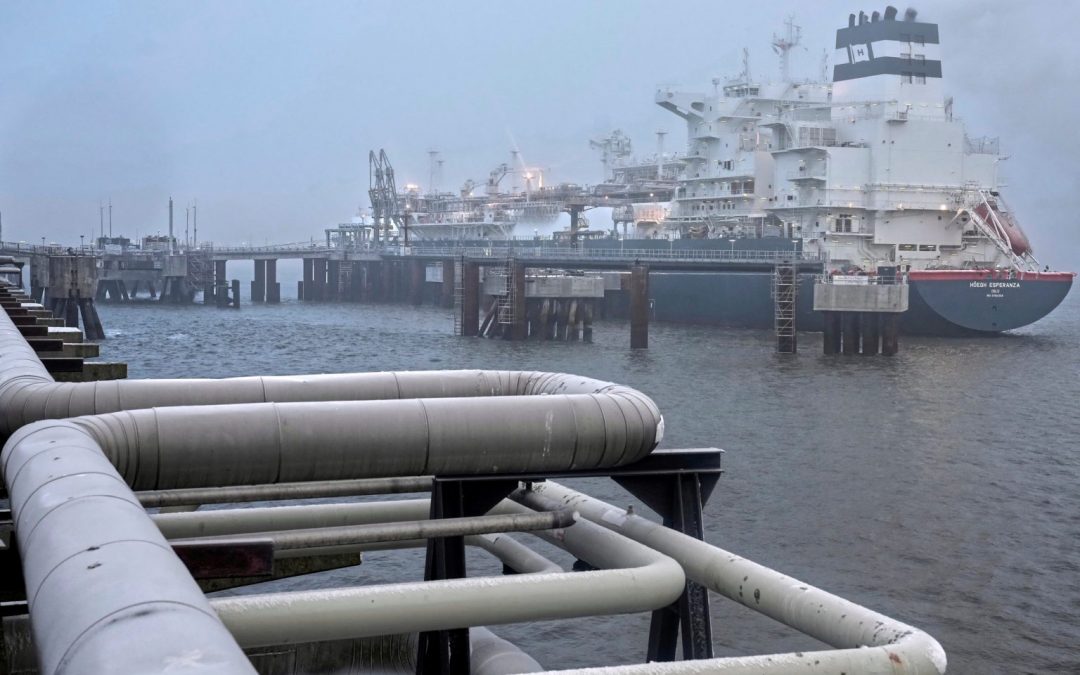Start of the Shell-backed 14 million mt/year LNG Canada project in 2025 will provide the impetus for new investments in British Columbia and its hinterland, as Asian buyers target Canada for its low-carbon LNG at a time of “unprecedented global energy crisis,” a senior industry official said Oct. 25.
A number of Asian embassies, and Japan in particular, have been talking to Canadian industry players about securing supplies and “are saying we want you in the market and we want your product,” Timothy Egan, President of the Canadian Gas Association, told S&P Global Commodity Insights in an interview from Ottawa.
All four Canadian LNG projects in British Columbia – the 14 million mt/year LNG Canada, the 12 million mt/year Ksi Lisims, the 3 million mt/year Cedar LNG and the 2.1 million mt/year Woodfibre – that are at various stages of development are targeting to be within the provincial government benchmark of carbon intensity levels of 0.16 mtCO2e.
For Canadian producers besides being in line with stringent federal government regulations on greenhouse gas emissions, the expectation is also of their low-carbon intensity fetching a ‘price premium’ with Asian buyers.
The debut shipment of Canadian LNG to global markets in now due in about two years with first volumes sailing for Asia and it will come as a time when global buyers have been waiting for a new entrant, Egan said. For the Asian market, Canada’s West Coast LNG producers have a few built-in advantages like shorter distance (a 10-day lesser sailing time for an LNG carrier from the Canadian Pacific Coast to markets in Asia, compared with the US Gulf Coast) and colder climate for production, Egan said.
While pricing will be a key element for Asian buyers, for Canadian producers the core advantage will stem from its security of supplies at a time of raging geopolitical crisis like the war in Ukraine and the Middle East crisis, Egan said.
“Pricing will be a strategic aspect. But given the incredible volatility in the global markets, buyers want secure supplies and Canada can offer that. So that may translate into a price advantage,” he said.
Egan did not indicate an attractive pricing of Canadian LNG for Asia buyers. But Andy Mah, a member of the board of directors of Advantage Oil & Gas, said at an industry conference in Vancouver in May that a JKM price of $12-$15/MMBtu is a “sweet spot” for a Western Canadian LNG producer.
Security of supplies is a bigger issue now and the target for Canadian producers would be to grab a higher market share through terms deals, Mah said then.
Missed opportunity, industry changes
Canada’s LNG industry missed an opportunity a decade ago, but its now a changed scenario with three primary new developments, Egan said, identifying them to be overriding First Nations support for resource development, the current global energy crisis and the high environmental standards being followed by LNG developers for their planned projects in British Columbia.
“There is now an extraordinary Indigenous support for LNG development and that’s a big change. We have Indigenous ownership (in the Woodfibre, Cedar and Ksi Lisims projects) and broad support for the export of LNG. This is a critical condition for the well being of the industry,” Egan said.
The other change is the geopolitical uncertainty with the global markets saying they need Canadian gas, he said.
“It is becoming harder and harder to say no and we now see the development of a popular momentum of Canada doing more with its gas,” Egan said.
Lastly, Canadian producers are also being mindful of a buyer demand for ‘certified’ gas and their focus on a cleaner supply source, he said.
“The incredibly high standards of the industry and particularly the high environmental performance has meant if want to put gas in the market and you want to make sure it is as clean as possible and is as responsibly sourced as is possible, there’s no better place to get gas than from Canada,” Egan noted.
Source: Hellenic Shipping News






